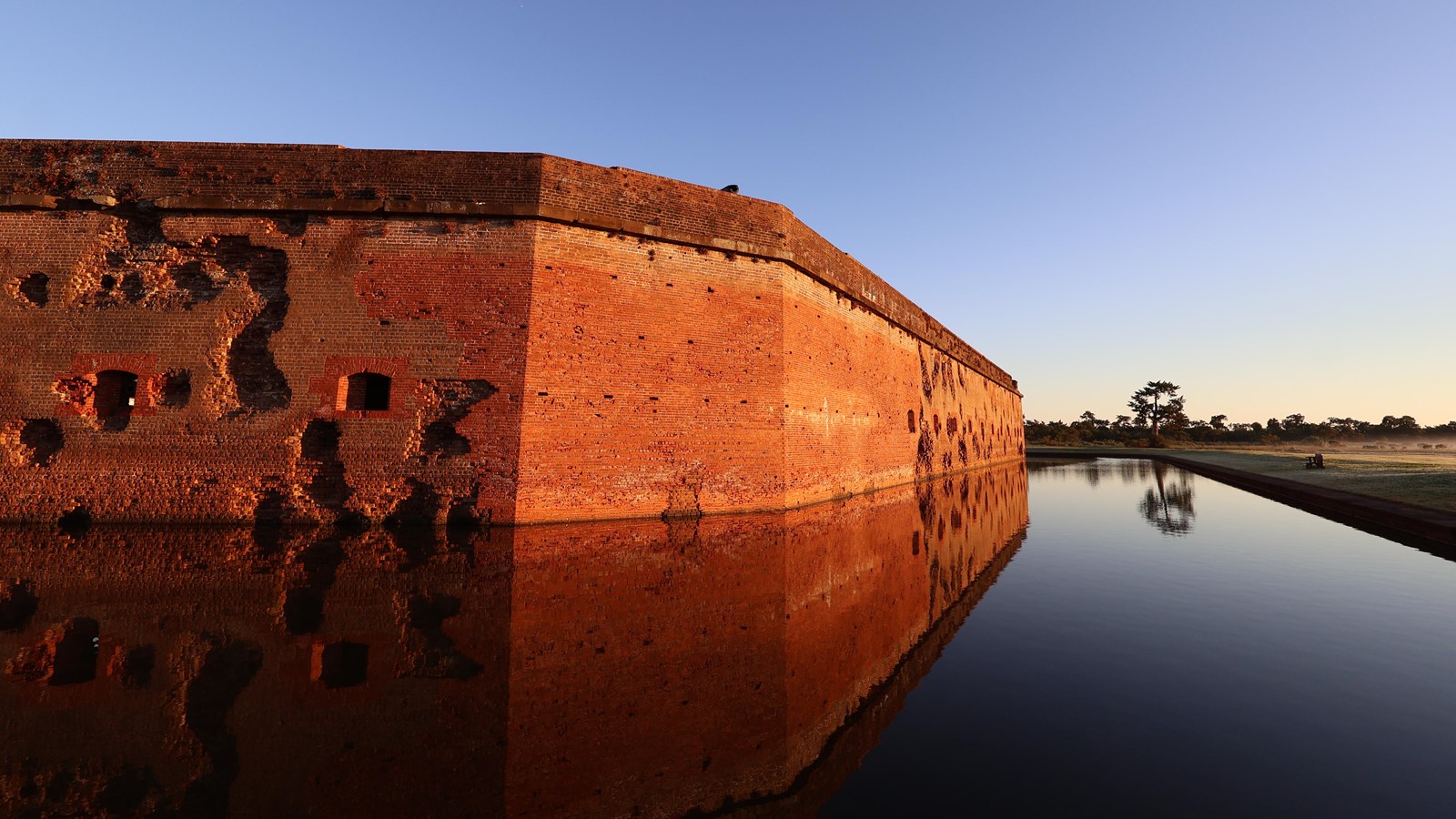Last updated: December 31, 2024
Place
The Breeched Corner

NPS/J. Irving
On, April 10, 1862, a little past eight, the United States artillery opened fire. For the next thirty hours, the walls of Fort Pulaski were struck thousands of times by projectiles. Soldiers inside of Fort Pulaski returned fire, of course, but the US Army was too far away for their cannons to be effective.
When Fort Pulaski was being built in the 1830s, people across the nation believed that it and other masonry forts like it were nigh on impregnable. With the technology of the time, the Fort Pulaski could not be taken by artillery on land. And any ships trying to get pass would have to run the gauntlet of the fort’s 146 cannons that controlled the two channels.
Except, the fort was never fully armed with 146 cannons. By the time of the battle in 1862, the Confederates only had around fifty cannons to control the two channels. Of those cannons, the majority were smoothbore guns with a range of only around a mile, just enough to reach the banks of Tybee Island.
The US Army had entrenched on Tybee Island and begun bringing in their own weaponry. Like the Confederates, a portion of their armament were smoothbore guns. However, of the thirty-six guns the Union brought to battle, ten of them were rifled. These rifled guns were relatively new inventions with a range of up to five miles, but they had never been tested against solid brick walls.
Never tested, that is, until those thirty hours on April 10 and 11, 1862. The bombardment reduced the fort's wall from eight feet to only two to four feet. The rifled projectiles bored into the walls, creating massive dents and creating holes that allowed light to be seen through the gaps in the wall. As the hours passed, these breaches began to widen and widen, until this entire corner was in ruins. The path to the powder magazine on the other side of the fort was now completely exposed. As US shells began to pass through this breached corner, they travelled across the parade to the Northwest Magazine that held nearly 40,000 pounds of black powder. Colonel Olmstead, the fort's commander, surrendered after realizing that the magazine was sure to explode if fighting continued.
After only thirty hours of bombardment, the battle was over, and fortifications would never be the same. The power of the rifled artillery had been proven, and masonry forts were shown to not be impregnable. Fort Pulaski marked the beginning of the end for this style of fortifications. By the end of the Civil War, masonry forts like Fort Pulaski were completely obsolete.
For more on the Bombardment of Fort Pulaski.
-
Breached Corner Ranger Talk
Listen to a park ranger talk about this tour stop.
- Credit / Author:
- NPS/E. Smith
- Date created:
- 07/01/2020
